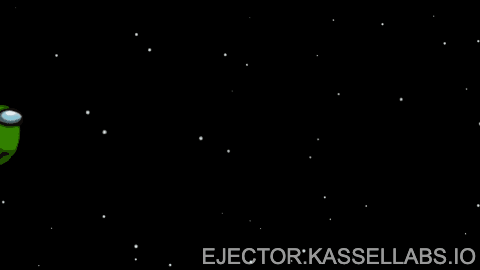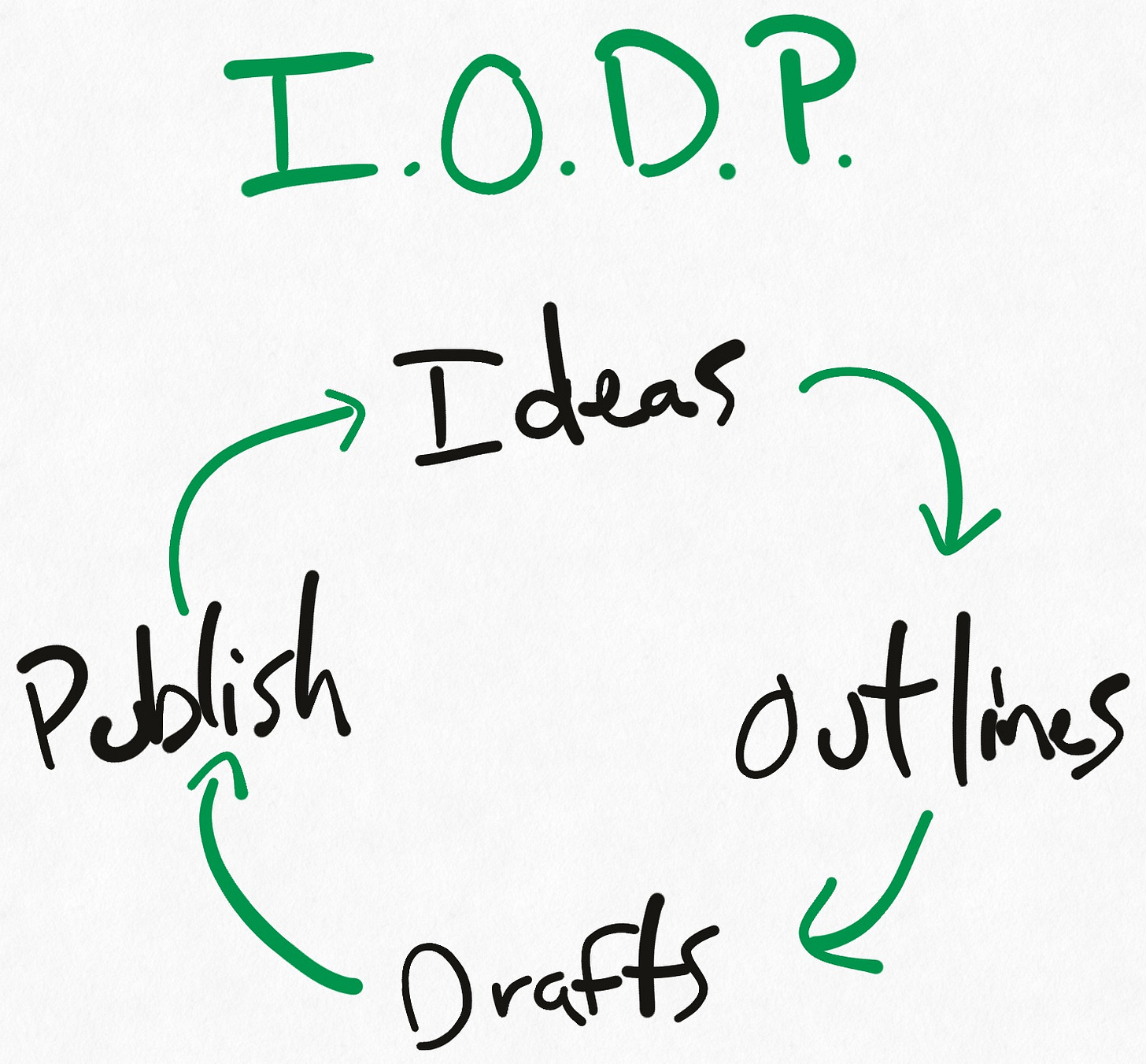KAIZEN CH.74 - How Integrating Peer Feedback Dramatically Improves your Writing
Thoughts on writing, productivity and workers
Hey friend 👋,
Welcome to the 74th edition of the Kaizen Newsletter ⛩, a weekly newsletter where I share my thoughts, new ideas I learn and make weird connections between self-improvement, productivity, product, tech, sports, anime.
This marks my second week of being an "official" YouTuber! Last week, I released a video version of my viral Tweet-Thread about the cold email I sent to Ali Abdaal.
You can check it here.
(if you got referred to this page by a friend or are simply visiting you can subscribe here👇)
Now, on to the newsletter.
One of the hardest things about writing online is that you never know what’s going to stick with your audience.
Earlier this year, I spent days writing a one thousand word essay on how to become a maker and happily sent it out to my then sixty awesome subscribers!
… And when I finally decided to ship it, it felt like I sent my piece to space.
I just had no idea if my piece was well-received or not. No comments, no email replies and had barely any views on it.
And that's the problem.
How can you mitigate the feeling of screaming into the void and get feedback on your writing before launching it off to the public?
Well, this has already been solved in other areas such as product development.
The Product Development Life Cycle
When building products for users, you don’t just think of an idea, go straight to building the product and right when it works, you ship it out.
Before shipping software, you want to follow a software release life cycle that is broken down into four different stages:
Pre-Alpha (Ideation) Stage
Alpha Stage
Beta Stage
Release
Ideation Stage
In the ideation stage, you want to validate that potential users are interested in your product.
A lot of times, this is done through a combination of customer interviews or a landing page describing what your product would do or both.
Alpha Stage
In the alpha stage, you have a working product, but it only has basic functionality.
It's enough for users to understand what the product is supposed to do and can give their overall opinion on if they believe they would use it once it has been released.
Beta Stage
In the beta stage, you are close to the final product. You know you have bugs, but the product is fleshed out and users can immediately start getting value.
This is where you often get feedback on details such as the user experience or the user interface of the software.
Launch
It’s only after going through all of the above phases will you ship software to the public.
The Writing Release Life Cycle
So why isn't there a "writing release life cycle?"
Well, there is.
Recently, I’ve joined Compound Writing, a writing community that helps you write smarter through peer feedback and editing. It has not only improved the quality of my newsletters and essays but also allows me to “test out” my ideas before clicking publish.
Stew Fortier and Dan Hunt, founders of Compound Writing, invented their own version of a "writing release lifecycle" in our Slack group that I’ll call “I.O.D.P.”
Which stands for Ideas, Outlines, Drafts and Publish.
Ideas
Similar to the ideation stage of product development, this is where you can validate your idea for your newsletter, blog post or any piece of writing that you’re grappling with.
Usually, this channel is used in three different ways:
You have a particular idea you want to write about, but you’re unsure if this is interesting. You can explain what you're trying to do and gather feedback from the group. Here’s an example where a member wanted to write a piece about emotional intelligence in the workplace but wanted to know our thoughts first. The next image is a super thoughtful reply given by Dan Hunt.
You have a particular idea in mind, but don’t have enough examples/arguments to form a complete piece. You can source examples from the group to give you more ammunition to start your essay. Here’s an example where the author wants to find more examples of creators who emphasize consistency in their work. In the screenshot, you can see an example (given by yours truly) of the type of comments/feedback that we give each other.
You’re trying to find the best topic to write about among different ideas. In this example, the writer asks our community to vote for the topic that looks the most interesting to them. This gives an idea to the writer of what could potentially be more popular and concentrate on that instead.
Outlines
Once you have your ideas dissected and expanded, you can start writing an outline.
This is similar to the alpha stage.
When outlining, you're far from the final product, but now you have a general idea of what the reader wants and you want to confirm it.
Drafts
This is where the magic happens.
Once you've confirmed your idea and wrote an outline, you're now ready to "build" your essay.
This is where my essays go from a 4 out of 10 to at least a 7 because I receive so much valuable feedback from my peers.
A lot of times, these are small changes, but they dramatically improve my essays.
Here are some common small changes that I’ve been given:
Providing an example instead of a statement.
Removing filler words or filler sentences that don't bring value to the reader.
Shortening the intro to get to the "meat" of the essay as soon as possible.
Publish
You can now see how going through all of the above steps will give you a lot of feedback way before you press the “publish” button.
This makes the moment of shipping your work a lot less daunting because you had so many touchpoints prior to this moment.
How to apply the framework outside of writing groups
Compound’s integrated I.O.D.P. structure has been the best way for me to get feedback for my writing without requiring to pay an editor, in particular, because of the quality of the other writers giving you feedback.
However, you can still replicate this framework outside of a writing group.
One way to test out your ideas is to have conversations with friends and ask them what they think about your topic.
I also know that David Perell preaches testing out your ideas through tweets and seeing how people respond to it. If there is a lot of interest, he would then include it in his newsletter or write up an essay about it.
But the most important thing I would focus on to improve your writing is to get feedback from someone else than you. Ask your friend, your mom, or even your dog. Getting a different pair of eyes on your paper helps a lot. The best is obviously if you can get someone who also writes, as the feedback quality will be better.
Wrapping Up
I’ve realized that when you start writing, you think it's an activity that you do all by yourself. But that is only partially true.
Yes, no one can write for you, but your writing becomes so much better when others help you and provide constructive feedback.
That’s why I recommend going through the IODP framework before publishing your piece. By doing this, you potentially get three different points of valuable feedback that will improve your writing before the public gets to read it.
So the next time you start an essay and you aren't sure how people are going to respond, just remember that you can always trust a smaller group of people to help you out.
🤔 Thoughts
🧠 Thoughts on Productivity
GTD (Getting Things Done) is a methodology for organizing and tracking your tasks and projects that was invented by productivity guru David Allen.
Although I've heard about this famous methodology multiples times already, I never took the time to apply it in my daily life.
As I mentioned in my previous newsletter, I'm getting busier and busier and I'm trying to find better ways to literally getting things done and I thought it would be a good idea to implement this framework.
I didn't want to go through the whole 300 pages of the book, I asked my friends at Commonplace to help me out. Cedric shared this amazing guide with me.
This is basically an action sheet on how you can implement GTD with your task manager.
Definitely going to be giving it a try... soon.
👨💻 Thoughts on Workers
I enjoyed reading about the concept of "barrels and ammunition", which is how Keith Rabois, a partner at FoundersFund, views organizations.
Conor explains summarizes the concept nicely in his piece:
In short, the output of your organization is dependent on the number of people that can own projects and see them through to the end.
A barrel is the type of person who brings an idea to reality and executes on it almost perfectly. The more barrels you have in a company, the more projects you can tackle simultaneously.
An “ammunition”, is someone who can execute a portion of a project really well.
The barrel is often a lead or a manager in the company, but sometimes a barrel can take the form of an engineer who brings an idea and builds the feature.
I’m definitely not a barrel - yet, but I’m working on this. Conor provides 5 steps to becoming a barrel:
Understand: Develop a mental model of the problem you're solving
Ideate: Think deeply about the problem and how to solve it
Take initiative: Create convincing proof of concepts for your ideas
Recruit others: Build relationships to bring in teammates to help
Deliver results: Level up your skills. Ship work that turns heads.
🐦 Tweets
This will happen eventually. It's just a question of when and how.


Love this atomic essay by my friend Stew. And no, it's not because I'm lazy that I'm sharing it (ok, just a little).
If you're a fan of Ali Abdaal, you'll love this video spoof of him.
🙏 Shoutout
Shoutout to Kushaan Shah and Nate Forster for amazing conversations last week!
Thanks to Stew Fortier and Ross Gordon from Compound Writing. As well as Derek Browsers, Tom White, Matt McPheely and Stacy Ndlovu from my writing group at On Deck for providing feedback for this edition of the newsletter.
👋 End Note
If you want to know what I'm up to now, you can check it on my website here.
If you enjoyed the Kaizen Newsletter, then it'd be cool if you can share it with your friends.
See ya next Tuesday,
Alexander ✌️












Always killing it, 💬
- taking notes from your newsletters